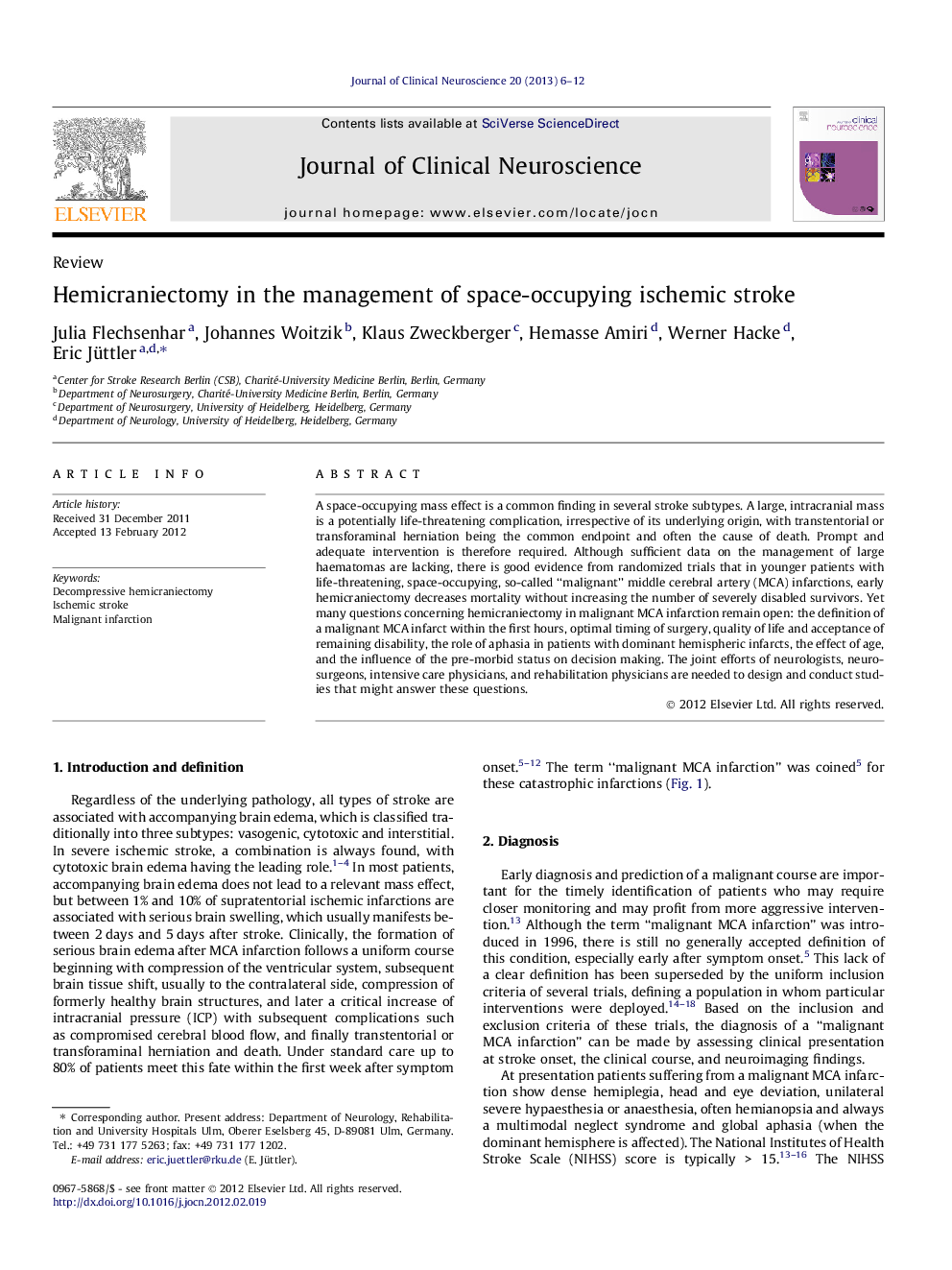| Article ID | Journal | Published Year | Pages | File Type |
|---|---|---|---|---|
| 3059856 | Journal of Clinical Neuroscience | 2013 | 7 Pages |
A space-occupying mass effect is a common finding in several stroke subtypes. A large, intracranial mass is a potentially life-threatening complication, irrespective of its underlying origin, with transtentorial or transforaminal herniation being the common endpoint and often the cause of death. Prompt and adequate intervention is therefore required. Although sufficient data on the management of large haematomas are lacking, there is good evidence from randomized trials that in younger patients with life-threatening, space-occupying, so-called “malignant” middle cerebral artery (MCA) infarctions, early hemicraniectomy decreases mortality without increasing the number of severely disabled survivors. Yet many questions concerning hemicraniectomy in malignant MCA infarction remain open: the definition of a malignant MCA infarct within the first hours, optimal timing of surgery, quality of life and acceptance of remaining disability, the role of aphasia in patients with dominant hemispheric infarcts, the effect of age, and the influence of the pre-morbid status on decision making. The joint efforts of neurologists, neurosurgeons, intensive care physicians, and rehabilitation physicians are needed to design and conduct studies that might answer these questions.
